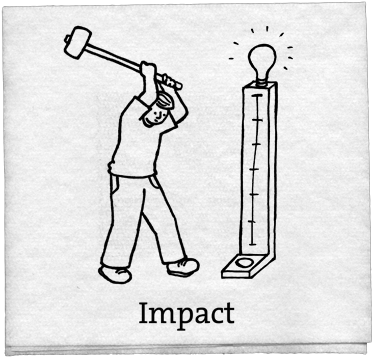
This is part five (and the final part) in a multi-part series on how Pennsylvania State University is implementing Enterprise 2.0. Part one covered the business drivers of Enterprise 2.0 for Penn State University, part two looked at change management issues around culture for Penn State University as well as where the push for E2.0 came from, part three explored technology adoption at Penn State University, part four examined if Penn State University went with a pilot project or if they want all in, and today we are going to look at the impact of these initiatives on Penn State as well as the future plans for enhancements and lessons learned. Similar case studies in this E2.0 series have been done in a similar fashion on Oce, Vistaprint, and Intuit. This case study was conducted with information provided by Bevin Hernandez who was the project manager when this initiative was completed. Bevin has since moved on to found a company called Firebrand where she is the Chief Organization Officer.
Operationally speaking a few things changed over at Penn State. How people work together has dramatically shifted. The current intranet is almost ubiquitously used a s collaboration tool which allows employees in the organization to identify each other. Overall there has been a dramatic reduction in the duplication of projects and the fasciculation of interactions. Information location has also shifted from email to a mostly intranet-based method of communication. On an individual level people are able to fully leverage their networks to accomplish tasks and openness is more widely encouraged. I should point out that at this point in time there are no formal rewards or incentives of any kind for employees using the new intranet.
I know a lot of people want to hear about things on the financial side so here’s what we have. The platform (ThoughtFarmer) was purchased on a licensed (with 2,000 seats) model not an annual per user model. This means that Penn State had an upfront annual cost of $80,000 for the first year. Around $50,000 of this was directly related to technology costs and around $30,000 was directly related to human capital costs. Since the platform is licensed, Penn State only pays an annual maintenance fee of around $8,000 plus the cost of a part time employee to manage the system for any subsequent years. At this point it has been around 2 years since the project was launched. As far as financial numbers around how much was saved or earned; I was told that this not being measured at this time.
Future plans for enhancements revolve around re-architecting the navigation to shift from a “people grouping” approach to a “content grouping” approach. I should also note that although this division within Penn State (the outreach division with 1,500 employees) did deploy an enterprise collaboration tool, that this was not fully deployed across the entire organization with over 20k+ employees. This has been pushed back due to the economic pinch they are currently facing as well as other IT priorities.
What were the lessons learned?
One group at Pen State was not involved in the “barn-raising” process (the corporate extension group), and looking back it would have been better if they Penn State had negotiated harder for them to be involved. They already had their own sharepoint implementation up and two other groups had versions of Drupal running. The two groups running Drupal switched over but the corporate extension group did not and hence they were a bit aloof from the rest of the organization that was using a central platform.
I always ask if there are any horror stories from implementations and Penn State said there were no horror stories.
Key Takeaways
- How people work has shifted, it’s easier for employees to identify and collaborate with one another
- No formal rewards or incentives are being used
- The one time annual cost for year one was $80k with only an subsequent $8k annual maintenance cost + the cost of one part time employee to manage the platform for subsequent years
- Not rolled out to the broader organization yet
- There were no horror stories

well…what can i say – very good series of articles… i’ve read them all and each next is more interesting then the previous. liked all of them so great thanks to the auther
So the Corporate extension group being aloof, not surprising. Love seeing the gains in people not duplicating projects. Interesting they shifted to converging on content. Will they be doing this through a use of tags? Hopefully people don’t assign their profile to all the content groups “just in case”….like some individuals do in linkedin around groups.
Did they say why they were not tracking the return objectives? Were there any? Or did they take the leap and say this makes sense for the future spend the money?
I know that Penn State uses Plone extensively. What role does it play?
Hi Keith,
Penn State was interested in solving their business problems which we outlined in part 1 of the document. When the initiative was started the discussion of financials and return wasn’t a focal point. Instead it was “what’s the problem and how can we solve it.” Hope that makes sense.